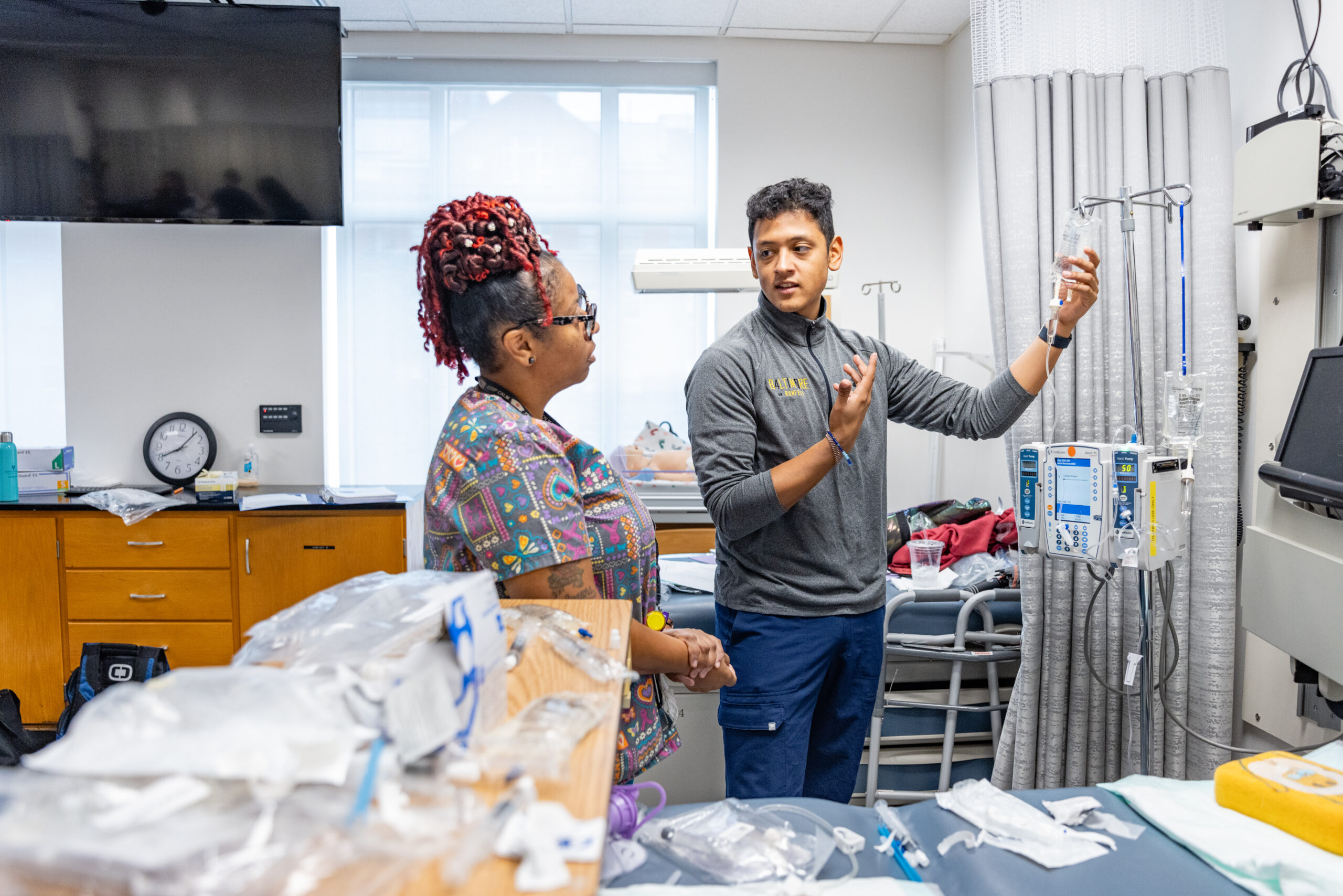When COVID-19 hit in early 2020, nursing educators everywhere faced the same terrifying question: How do we continue clinical training for the next generation of nurses when traditional clinical experiences suddenly became impossible? Our faculty didn’t just rise to the challenge—we completely reimagined what clinical education could look like in the midst of a global crisis. What started as a pandemic necessity has now become a sustainable part of our MSN (Entry Into Nursing) program, and the results speak for themselves.
When Everything Changed
Picture this: You’re a nursing student just weeks away from graduation, ready to tackle your final practicum—the capstone experience that’s supposed to seal the deal on everything you’ve learned. Suddenly, hospitals are limiting access, clinical sites are closing their doors to students, and your carefully planned rotations fade overnight. All while the world is battling a deadly pandemic. But instead of throwing in the towel, our clinical placements team got creative.
The Game-Changing Solution: Virtual Simulation
Before the pandemic, students completed about 20% of onsite simulations to prepare for 12 weeks of onsite clinical learning with a clinical preceptor at an assigned site. The clinical practicum plan was created by the course faculty, then reviewed and endorsed by the school of nursing leadership team following consultations with partnering clinical institutions to evaluate the feasibility and resources available for students participating in onsite clinicals. After exhaustive team and leadership meetings, we came up with was a hybrid clinical model that hadn’t been done before. We needed to create a comprehensive experience that was aligned with the program objectives, as well as with the regulatory policies for nursing education. In this new model, students spent six weeks in traditional on-site clinical rotations with a clinical preceptor, but then seamlessly transitioned into high-tech virtual clinical simulations, followed by online debriefing sessions where they could process everything they’d learned and experience. It wasn’t just a band-aid solution for the time being, it was a complete rethinking of how clinical education could operate in our new normal.
Over 600 students participated in this new model, logging more than 120 hours of hands-on, in-person clinical experience, 25 hours of onsite simulation, and up to 80 hours of virtual simulation. Through virtual simulation, students had the opportunity to practice critical thinking, work through interprofessional collaboration scenarios, and hone their communication skills in a controlled environment where mistakes became learning opportunities rather than patient safety concerns. Clinical learning was now being implemented across multiple platforms.
Hopkins clinical faculty implemented this new model in March of 2020, and meticulously tracked its effectiveness using quality improvement standards. The results? Students reported feeling highly confident in their clinical skills. More importantly, our NCLEX pass rates stayed well above the national average. That’s huge, because NCLEX success is really the gold standard for measuring whether nursing students are truly ready to practice safely.
From Emergency Solution to Sustainable Strategy
This new model wasn’t just a temporary fix; it became a sustainable solution. We saw the potential in what we’ve created and integrated to all cohorts in the MEN program. Five years later, we’re still using this hybrid model because it works so well. What our faculty accomplished here represents exactly the kind of innovative thinking that advances nursing education. The fact that over 600 students successfully completed this program while maintaining excellent outcomes shows that our faculty didn’t just adapt, they excelled. They proved that with adaptability, dedication, and following accredited educational principles, you can maintain quality while completely reimagining delivery.
This hybrid model was implemented and evaluated through a quality improvement project, which means other nursing programs can learn from and replicate what we’ve done. The details of our project, led by Dr. Janelle Akomah, titled ‘Integration of virtual simulation to re-establish clinical placements for pre-licensure nursing students’ has been published Clinical Simulation in Nursing. Since then, Dr. Akomah has expanded these innovative strategies to enhance clinical placement practices in our DNP/Family Nurse Practitioner (FNP) program. Her efforts in establishing and maintaining clinical partnerships have created opportunities for students to gain clinical experience in areas facing a clear shortage of preceptors across primary care and other clinical settings. Driven by her passion for supporting student practicums, Dr. Akomah also works with our simulation team in OSCE immersions in the DNP-FNP courses that foster hands-on learning in a safe and supportive environment.
Looking Forward
As we continue using this hybrid model, it’s clear that our faculty created something special. They’ve given future nursing students a richer, more diverse learning experience that prepares them for the realities of modern healthcare practice. The pandemic challenged everyone in nursing education to think differently. Our faculty didn’t just rise to the challenge, they set a new standard for clinical learning. That’s exactly the kind of innovative thinking we want our future nurses to learn from their very first day in the program. Sometimes the best innovations come from the most unexpected places. In this case, a global crisis became the catalyst for creating a clinical education model that’s now helping hundreds of students become better prepared, more confident nurses.

